Masterpieces by Japan's most celebrated lacquer artist from a royal collection offered at Bonhams
LONDON.- Bonhams announced the sale Masterpieces of Japanese art from a Royal collection that will take place on Thursday 7 November at Bonhams New Bond Street saleroom. The works of art from this outstanding private collection were created by some of the most acclaimed artists to emerge in Japan during the Edo and Meiji Periods.
Highlights of the collection will also be on exhibition at Bonhams New York from the 5-11 September 2019, before going to Bonhams Hong Kong saleroom from the 9-11 October 2019.
Among the highlights are a strong selection of masterpieces produced during the lifetime of Shibata Zeshin (1807-1891), one of Japan’s most revered Lacquer artists. Leading the sale is a wood panel depicting a scene based of the Noh play Hachi no ki shows a farmhouse in the snow at Sano. The panel from the Meiji era,1883, has an estimate of £300,000-500,000.
Lot 14. Shibata Zeshin (1807-1891), Lacquered wood panel with design of a farmhouse in the snow at Sano, Meiji era (1868–1912), dated 1883; 37.8cm × 61cm (14⅞in × 24in). Estimate £300,000-500,000. Photo: Bonhams.
The roiro-nuri ground decorated in a range of lacquer techniques including extensive silver takamaki-e to depict the snow on the ground and roof, plants, pots, and other details; tetsusabi-nuri for the clay walls; togidashi maki-e for the straw matting and the floor of the tokonoma alcove; the details in gold and silver takamaki-e, gold hirame, and other finishes; the panel depicting a scene based on the Noh play Hachi no ki, with the impoverished former courtier Tsuneyo Genzaemon about to offer hospitality to Lord Hōjō Tokiyori disguised as a wandering monk; Tokiyori kneels at the door of Genzaemon's hut, his hat and oi (priest's carrying frame) hanging on the wall and in the alcove behind him, his horse in a shed outside eating from a wood bucket; farming implements visible behind the horse; a snow-laden pine tree overhead; Genzaemon seen through a window, seated with a juzu (rosary) in his hands; in the foreground, snow-covered miniature plum, cherry, and pine trees on a platform over a pond; the reverse of plain black lacquer over cloth with two vertical struts each with a ring fitting for hanging the panel; signed in gold maki-e characters Gyōnen nanajūnana Koma Zeshin sei 行年七十七 古満是真製 (Made by Koma Zeshin, aged 77).
With fitted wood tomobako inscribed outside Maki-e setchū Sano no zu gakumen 蒔絵 雪中佐野之図 額面 (Panel with maki-e design of Sano in the snow); signed inside Koma Zeshin sei 古満是真製 (made by Koma Zeshin) with seal Nanajūnana-sō 七十七叟 (aged 77); accompanied by an auction slip recording that the panel was sold (in April 1926, see below) for 3,750 yen and that the auction was held by Matsunaga Genkichi 松永源吉, Hokura Hikoichi 保倉彦一, and Hokura Hikohachi 保倉彦八; cloth-bound outer storage box (4).
Exhibited and Published: Shinjōji, Niigata, 1926 Tōkyō Kokuritsu Hakubutsukan (Tokyo National Museum) 2004, cat. no. I-99 Nezu Bijutsukan (Nezu Museum) 2012, cat. no. 53.
Note: During the last two decades of his career, Shibata Zeshin produced a number of large-scale lacquer panels, starting with a view of Mount Fuji shown at the 1873 Vienna World Exposition. Clearly intended to emulate the scale and impact of framed Western oils and to establish lacquering as an independent painting medium, these panels are among Zeshin's most unusual and striking works. Most of them depict scenes from Japanese nature, but in 1877 he exhibited a panel featuring a hothouse and bonsai trees (Gōke 1981b, pl. 120) at the first Naikoku Kangyō Hakurankai (National Industrial Promotion Exhibition) and the success of this piece, now in the Imperial Collections, might have inspired him to tackle the more ambitious scene depicted here, also based around buildings. The present lot appears to be the only Zeshin panel to feature human figures. Its explicit narrative theme is in strong contrast to traditional Japanese story-telling lacquers, which often make only understated, hard-to-catch, references to the texts on which they are based. Here Zeshin, likely influenced by contemporary Western history painting, adopts an explicit approach and includes virtually all the essential components of a famous Noh play's plot: the two protagonists, the snowy landscape, Tokiyori's horse, and the three plants which Genzaemon sacrifices in order to fulfil his duties as host. In the Noh play Hachi no ki a wandering priest, later identified as the great warlord Hōjō Tokiyori (1227–1263), who has adopted this disguise in order to 'acquaint himself with the needs of his subjects', seeks shelter from Tsuneyo Genzaemon, in reality the dispossessed Lord of Sano and a former retainer of Tokiyori. After some hesitation, Genzaemon's wife persuades her husband to let the priest enter and Genzaemon offers to us
Another highlight is Shibata Zeshin’s paulownia-wood door, Door with Autumn Maple-Viewing Scene, decorated in gold, silver, red, brown and black takamaki-e. The panel was shortlisted for the ‘Asian Art in London’ prize in 2015 and has an estimate of £150,000-200,000.
Lot 18. Shibata Zeshin (1807-1891), Door with Autumn Maple-Viewing Scene, Meiji era (1868–1912), late 1880s; 59.3cm × 39cm (23⅜in × 15⅜in). Estimate £300,000-500,000. Photo: Bonhams.
A paulownia-wood door panel, decorated in high-relief gold, silver, red, brown, and black takamaki-e, some areas highly polished and others heavily textured, depicting a silver tea kettle suspended from a natural branch laid on two rocks over a fire, pine needles and curling maple leaves lying nearby; the reverse painted in ink and silver paint with a sparrow flying above a stylized stream with sprigs of seri (Japanese parsley, Oenanthe javanica); signed in subori on the right, at the base of the rock, Zeshin 是真 with a kaō resembling the character kin 巾. With cloth-bound outer storage box.
Provenance: Sold in these Rooms, 10 November 2015, lot 7 Exhibited and Published: Nezu Bijutsukan (Nezu Museum) 2012, cat. no. 47.
Note: In his catalogue note for the 2012 Zeshin exhibition at the Nezu Museum, Takao Yō comments that the technique and design of this door is closely related to a much-praised maki-e panel depicting a mushroom-gathering scene submitted by Zeshin to the first Naikoku Kangyō Hakurankai (National Industrial Promotion Exhibition), held in 1877. Designs based on the autumn custom of maple-viewing were one of Zeshin's favourite themes during the final fifteen years of his long career: here he uses the range of special finishes he had perfected during the preceding decades to produce an exceptionally deep three-dimensional effect. Similar rough, rich textures, probably emulating of Western oil painting, are also seen, for example, on the rocks in Zeshin's panels of crayfish, exhibited in 1888, 1889, and 1890 (Gōke 1981b, pl. no. 3). Parts of the fireplace are executed using a carving technique also seen in Zeshin's inrō made to resemble ancient sticks of ink (see, for example, Nezu 2012, cat. nos. 93–96). A closely-related maki-e panel of this subject by Keishin, in the collection of Zeshin's eldest son Reisai (1850–1915), was reproduced in a biography of Zeshin published in Kenchiku kōgei sōshi in June 1914 (Suzuki 1914). The kaō Zeshin added after his signature on this piece, in the form of the character kin 巾, is seen on works dating from 1879 onward (for other examples, see Earle and Gōke 1996, p. 30, [h]).
The sale also includes examples of Zeshin’s much loved inrō (miniature medicine cases). One example, formerly in the legendary Vever and Greenfield Collections, is shaped as a rustic hut containing a box decorated with Shōki the Demon-queller in pursuit of his quarry. Famous among Zeshin enthusists the world over, this inrō is estimated at £60,000-80,000.
Lot 22. Shibata Zeshin (1807-1891), Inrō (medicine case) with design of Shōki the demon-queller and a demon, and netsuke (toggle) with sake-bottle design, Meiji era (1868–1912), circa 1886. Inrō: 8.2cm × 6cm × 1.6cm (3¼in × 2⅜in × ⅝in) Netsuke: 3.2cm × 2.7cm × 1.4cm (1¼in × 1in × ½in). Estimate £60,000-80,000. Photo: Bonhams.
In sheath-inrō form, the case of wood covered in silver fundame textured in ishime-nuri to imitate the walls of a rustic dwelling, each side pierced with a window, the window bars rendered on one side in shell and on the other in tetsusabi-nuri, one side of the sheath hinged to release the container inside, the interior of the sheath finished in gold fundame lacquer, the container probably of paper, with overhanging lid and divided interior, covered in gold kinji and ishime-nuri; on the front, Shōki the Demon-queller in coloured togidashi maki-e seen from the waist up, dressed in the robes and cap of a Chinese scholar-official, with his sword on his back and wearing a baleful expression, the reverse also in togidashi maki-e with an oni (demon) in silhouette hiding behind a shōji (paper screen), the netsuke in box form, of wood lacquered in shibuichi-nuri and with a design of a large and a small decorated gourd in takamaki-e; iron and gold ojime in the form of a mallet; the inrō signed in scratched characters on the base near one of the cord-runners Zeshin 是真, the netsuke signed in scratched characters on the base Zeshin 是真.
Exhibited and Published: Stern 1972, cat. no. 164 (inrō) Pekarik 1980, cat. no. 79 Eskenazi 1990, cat. no. 79 Nezu Bijutsukan (Nezu Museum) 2012, cat. no. 87
Note: The Chinese demon-queller Shōki in pursuit of a fleeing oni (demon) was one of Zeshin's favourite subjects in both lacquer and painting, and numerous examples are extant (for a painted version, see lot 11 in the present catalogue). The Nezu Museum in Tokyo owns an inrō (Nezu Bijutsukan 2012, cat. no. 86) which is very similar to the present lot with the difference that the inner container is in the more usual form of a set of interlocking compartments. With its intricate structure, complex range of techniques, lively characterization, and meticulous finish, this lot displays many of the virtues of Zeshin's finest inrō.
Director of Bonhams Japanese Art, Suzannah Yip said, “The fact that so many fine works by Shibata Zeshin are grouped together in one auction is unprecedented. This outstanding collection, brilliantly illustrates not merely the diverse talent of the artist’s oeuvre, but the sharp eye of the distinguished collector, who has brought this collection back to Bonhams”.
Other highlights in the sale include:
Lot 3. Tanaka Tadayoshi (Also known as Muneyoshi, died 1950), Iron articulated model of a snake, Taisho era (1912–1926), circa 1915; 162.9cm (64⅛in) long. Estimate £100,000-150,000. Photo: Bonhams.
A model of a large snake, finely constructed from numerous russet-iron hammered plates with hidden joints inside the body, the head incised with scales and fitted with a hinged jaw opening to reveal a movable tongue, gilt eyes; signed on the underside of the jaw Muneyoshi 宗義.With wood storage box.
Provenance: Christie's New York, 18 April 2018, lot 111.
Note: A pupil of Takase Kōzan, a celebrated maker of articulated animals, Tanaka Tadayoshi is best known for superb dragons, snakes, shachihoko (dragon fish), and other creatures made during the first half of the 20th century; see Harada 2016, p.225. Of all the categories of late Edo-period and Meiji-era artefact eagerly collected outside Japan over the last 150 years, articulated animals have left the least trace of documentary evidence concerning their background and development. Even the Japanese word for them, jizai or jizai okimono, appears to be a post-Edo term. Yet regardless of their obscure origins, these displays of Asian dexterity perfectly matched trends in Western Orientalist taste in the closing decades of the nineteenth century. In Europe, they were first highlighted in the Parisian journal Le Japon Artistique (1888-1891), which reproduced an articulated frog in three different positions and described it in detail. They were not reintroduced to Japanese audiences, however, until October 1983, when several examples were displayed in the special exhibition Nihon no kinko (Japanese Metalwork) held at Tokyo National Museum.
Lot 25. Shibata Zeshin (1807-1891), Zansaisage or Tonkotsu (Container for food scraps) with a stable at night, Meiji era (1868–1912), 1880s. Zansaisage: 5.1cm × 6.5cm × 3.4cm (2in × 2½in × 1⅛in) Netsuke: 3cm x 2.6cm x 1cm (1⅛in x 1in x ⅜in). Estimate £60,000-80,000. Photo: Bonhams.
A zansaisage (container for food scraps) with dark green seidō-nuri ground, decorated in gold and coloured hiramaki-e, takamaki-e, and other techniques, and with mother-of-pearl; on one side, a horse emerging from a broken-down stable to eat or drink from a wood pail hung from the branch of a willow tree, the tree continuing onto the reverse; the lid of plain wood; the interior with seidō-nuri ground; the lacquered netsuke in the form of a broken-off piece of ink decorated in relief with musical instruments; the zansaisage and netsuke both signed Zeshin 是真 in incised characters. With unrelated wood storage box.
Provenance: Baron Gō Seinosuke (1865–1942) Collection 郷誠之助旧蔵 Grace Tsumugi Fine Art, London 2013, cat. no. 22.
Published: Nihon Netsuke Kenkyūkai 2003.
Note: This outstanding zansaisage was formerly in the collection of the businessman Baron Gō Seinosuke, best known in the art world for the collection of netsuke which he donated to Tokyo National Museum. Of senior samurai origin, he studied in Germany and on his return built an industrial conglomerate based on mining, paper, and clothing. He later served as Chairman of the Tokyo Stock Exchange and was appointed to the House of Peers in 1911. For another similar example, see Link, 1979, cat. no. 64. A design similar to this, but with the horse already eating or drinking from the bucket, is included in a collection of surimono (privately commissioned prints) by Zeshin, entitled Zeshin ga sōsho (Collected paintings by Zeshin) and dating from the Kaei era (1848–1854) to the Meiji era, in the National Diet Library (call number ゑ-258); a related zansaisage or tonkotsu is in the Honolulu Academy of Arts. Zeshin was fond of depicting broken-down buildings in both painting and lacquer, particularly in designs alluding to the penurious Chinese scholar Shain (Chinese: Che Yin). For examples, see Izzard 2007, cat. no. 40 and Earle and Gōke 1996, cat. no. 49).
Lot 25. Shibata Zeshin (1807-1891), Inrō (medicine case) with design of antique mirrors, Meiji era (1868–1912), circa 1870–1890. Inrō: 7.6cm × 4.8cm × 1.6cm (3in × 1⅞in × ⅝in) Netsuke: 3.5cm × 2cm (1⅜in × ¾in). Estimate £40,000-60,000. Photo: Bonhams.
With four interlocking cases and cover, of standard lenticular cross-section with straight sides, rounded corners, curved top and base, and integrated cord-runners, the roiro lacquer ground decorated in black maki-e with a continuous ground of ken-katabami mon (heraldic crests of swordblades combined with flowers of wood sorrel, Oxalis corniculata), an antique mirror on each side executed in chadō-nuri takamaki-e, one of the mirrors eight-lobed with a dragon design, its carrying cord in red lacquer extending to the other side and terminating in a tassel, the other nine-lobed with a design of two phoenixes alternating with paulownia crests, the compartments and risers gold nashiji, the shoulders and rims brightish gold fundame; the ojime of carnelian; lacquered wood manjū netsuke decorated in gold, silver, and red hiramaki-e with two phoenixes; signed in subori to the left of the handle of the smaller mirror Zeshin 是真. With fitted wood storage box.
Provenance: Sold in these Rooms, 10 November 2015, lot 6
Exhibited and Published: Nezu Bijutsukan (Nezu Museum) 2012, cat. no. 94.
Note: In 1875, Zeshin paid a visit to Nara where he was able to examine items stored in the Shōsōin, the eighth-century Imperial treasure house in the precincts of the Tōdaiji Temple (Earle and Gōke 1996, p. 46, quoting Umezawa Ryūshin's 1927 biography of Zeshin). Objects from the Shōsōin, until then almost inaccessible to anyone outside the Imperial court, subsequently played an increasing influential role in Japanese art from early in the Meiji era. Zeshin was no exception to this trend and it is likely that the mirrors depicted on this inrō were loosely modelled on originals stored in the Shōsōin, either Chinese Tang-dynasty examples or Japanese copies of around the same date. He lavished typically meticulous craftsmanship both on the mirrors and on the dense background pattern of mon (crests). Takao Yō notes that although chadō-nuri, used here for the mirrors, is listed as a separate technique in Sawaguchi Goichi's monumental study of Japanese lacquer, Nihon shikkō no kenkyū (1933), in Zeshin's time it would simply have been regarded as a variant of seidō-nuri. Chadō-nuri differs from seidō-nuri in that it contains bengara (red iron oxide) in addition to orpiment (arsenic sulphide), producing an effect that, as Takao comments, is ideally suited to imitating the surface of antique bronze (Takao 2011, figs. 14, 15).
Lot 25. Shibata Zeshin (1807-1891), Urushi-e (Lacquer painting) of a farmer’s house in early spring, Meiji era (1868–1912), dated 1888. Overall: 61.1cm x 81.4cm (24in x 31⅞in) Image: 47.5cm × 67.9cm (18¾in × 26¾in). Estimate £30,000-50,000. Photo: Bonhams.
An urushi-e painting depicting a peaceful scene of a farmer's rustic dwelling, well maintained but showing its age, in early spring: to the right a straw hat and mino (raincoat) hanging on the wall of the house by a tree and a ragged sudare (roller blind) hung from the eaves; sheaves of rice straw leaning against the walls, and in front a rooster and hen pecking grains of rice from a rice-mortar standing on a straw mat; the inside of the house with details including smoke rising from the hearth with its jizai (adjustable pot hanger), cups in a basket, a pair of zōri (straw sandals), a bunch of daikon radishes, a sickle, a stone grinding-mill, and an uchiwa (non-folding fan); to the left, two children, one barefoot and one wearing zōri, feeding hay to the family ox, a spider's web above its head; in the foreground, a stream with a plank bridge and timber reinforcements; all executed in a range of urushi-e colours, the smaller child's kimono with fine shell decoration and the plum blossoms in silver foil; parts of the paper decorated with gold dust; signed at lower right Gyōnen hachijūni-ō Zeshin 行年八十二翁是真 (Zeshin, aged 82) with a seal Tairyūkyo 對柳居. With cloth-bound storage box.
Provenance: Grace Tsumugi Fine Art London, 2015, cat. no. 4.
Exhibited: Nihon Bijutsu Kyōkai (Japan Art Association), 1888 Nezu Bijutsukan (Nezu Museum), 2012.
Published: Gōke 1974, pl. 7 Gōke 1981a, pl. 140 Nezu Bijutsukan (Nezu Museum) 2012, cat. no. 122.
Note: This ambitious urushi-e painting shares features with other works by Zeshin that reflect his penchant for depicting rustic buildings; parts of the composition also echo the lacquer panel offered as lot 14 which has some strikingly similar features including the overall placing of the house and the outlines of the walls and roof eaves. Zeshin here makes a special effort to use urushi (liquid lacquer) to imitate oil paints, applying it in a wide variety of thicknesses and textures, from the deft strokes of the grasses in the foreground to the thick impasto of the thatched roof. This painting was exhibited in 1888 at the Nihon Bijutsu Kyōkai (Japanese Art Association), winning a silver medal for its 'remarkable technique'.

/https%3A%2F%2Fprofilepics.canalblog.com%2Fprofilepics%2F1%2F0%2F100183.jpg)
/https%3A%2F%2Fstorage.canalblog.com%2F03%2F02%2F119589%2F96711876_o.jpg)
/https%3A%2F%2Fstorage.canalblog.com%2F11%2F31%2F119589%2F94773502_o.jpg)
/https%3A%2F%2Fstorage.canalblog.com%2F20%2F83%2F119589%2F94772815_o.jpg)
/https%3A%2F%2Fstorage.canalblog.com%2F26%2F72%2F119589%2F75604929_o.jpg)
/https%3A%2F%2Fstorage.canalblog.com%2F59%2F60%2F119589%2F26458628_o.jpg)


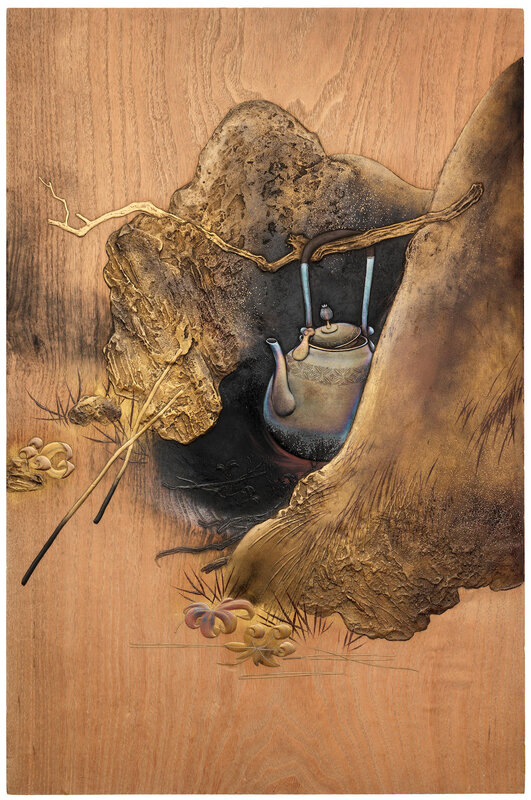





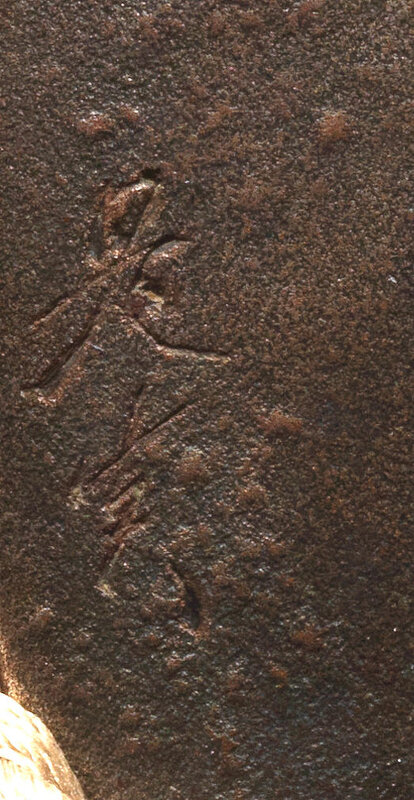
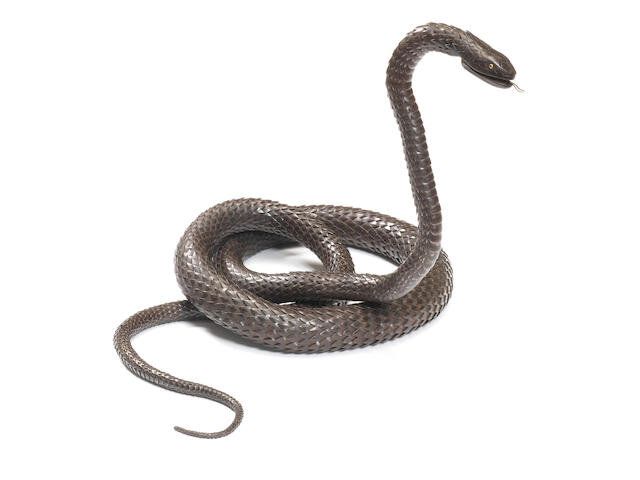





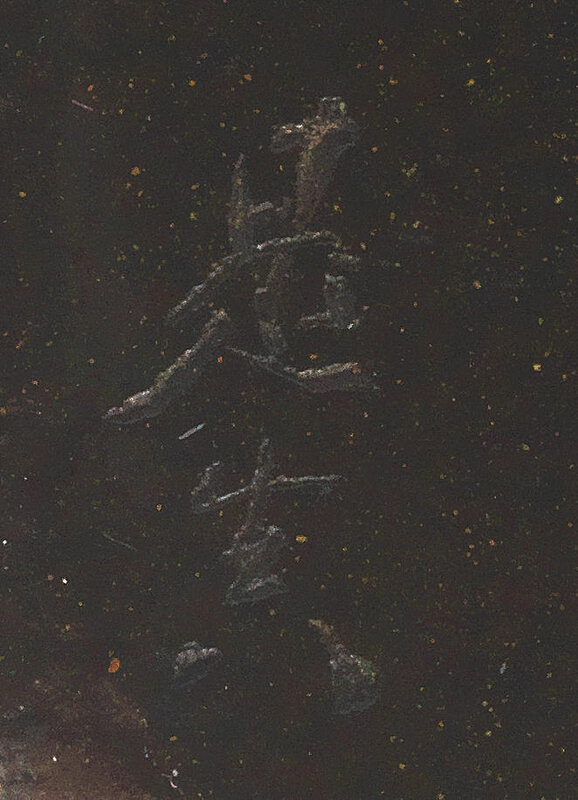
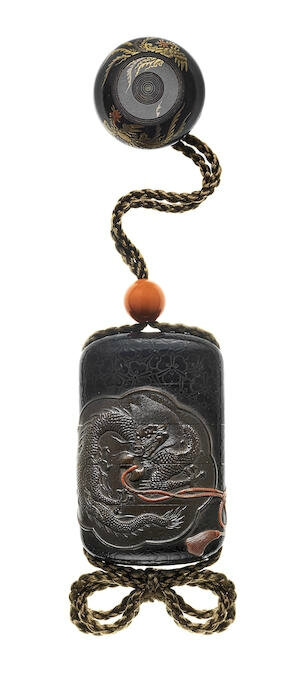




/http%3A%2F%2Fstorage.canalblog.com%2F13%2F37%2F119589%2F129550780_o.jpg)
/http%3A%2F%2Fstorage.canalblog.com%2F47%2F91%2F119589%2F110611313_o.jpg)
/http%3A%2F%2Fstorage.canalblog.com%2F36%2F15%2F119589%2F110611160_o.jpg)
/http%3A%2F%2Fstorage.canalblog.com%2F22%2F38%2F119589%2F110611054_o.jpg)